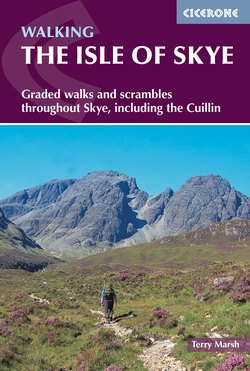Читать книгу The Isle of Skye - Terry Marsh - Страница 20
На сайте Литреса книга снята с продажи.
ОглавлениеWALK 1.9
Kyle Rhea Trail
| Start/Finish | Car park (NG787212) |
| Distance | 4.5km (3 miles) (maximum) |
| Total ascent | Negligible |
| Map | OS Explorer 412 |
The start of the walk is found not far from the Kylerhea ferry slip at the far end of Kylerhea Glen, and is reached by a narrow and circuitous route through a fascinating landscape from the main Kyleakin–Broadford road, near the airstrip. For this very easy walk ensure your essential equipment includes a pair of binoculars as the walk visits a viewing hide overlooking a stretch of the kyle much favoured by otters, seals and seabirds. Don’t expect a ready display of these beautiful creatures, but patience mingled with fortune will provide a memory of Skye that is second to none.
Leave the car park, following the broad trail, and soon pass through a gate giving access to the nature reserve. There are throughout the walk good views across the kyle to the wooded slopes of Druim na Leitire, and of the habitat customarily frequented by otters, in particular. As you approach the viewing hide, do keep noise to a minimum, otherwise any chance of seeing otters and the many other species of wildlife that frequent this coast will vanish. The hide is usually manned by staff of Forest Enterprise, and they will give advice about what to look for, as will the displays within the hide.
As you leave the hide, turn right down a wooded trail for a short detour, past a miniature waterfall and pool, to climb steps back onto the main trail. Turn right, and follow the trail, either as far as you like or until it ends, close by the power lines overhead. Any thoughts of pressing on through the forest should be banished. The path does continue a short way, but becomes impenetrable before long. Simply go back to the car park along the main trail, scanning the slopes of Beinn Bhuidhe for a glimpse of deer or a golden eagle.
The Glenelg Ferry at Kylerhea
OTTERS
Otters are members of the Mustelidae family, which includes weasel, stoat and mink, and an average-sized otter will measure about 1.2m (4 feet). They will eat anything, and have a hearty appetite, though their main diet comprises fish, crustaceans, amphibians and small mammals. Otters are a protected species under the Wildlife and Countryside Act 1981, under the provisions of which it is an offence intentionally to disturb an otter in its place of shelter, or knowingly to approach its holt.
